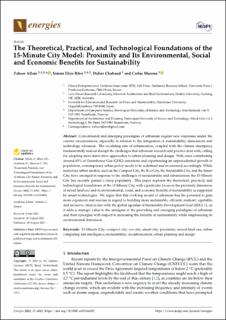| dc.description.abstract | Conventional and emerging paradigms of urbanism require new responses under the current circumstances, especially in relation to the integration of sustainability dimensions and technology advances. The escalating rate of urbanization, coupled with the climate emergency, fundamentally indeed disrupt the challenges that urbanism research and practice deal with, calling for adopting more innovative approaches to urban planning and design. With cities contributing around 65% of Greenhouse Gas (GHG) emissions and experiencing an unprecedented growth of population, contemporary urban policy needs to be redefined and re-assessed accordingly. While numerous urban models, such as the Compact City, the Eco-City, the Sustainable City, and the Smart City, have emerged in response to the challenges of sustainability and urbanization, the 15-Minute City has recently gained a steep popularity. This paper explores the theoretical, practical, and technological foundations of the 15-Minute City, with a particular focus on the proximity dimension of mixed land-use and its environmental, social, and economic benefits of sustainability as supported by smart technologies. We argue that this evolving model of urbanism has the potential to gain more expansion and success in regard to building more sustainable, efficient, resilient, equitable, and inclusive cities in line with the global agendas of Sustainable Development Goal (SDG) 11, as it adds a strategic value to the amalgam of the prevailing and emerging paradigms of urbanism and their synergies with respect to increasing the benefits of sustainability while emphasizing its environmental dimension. | en_US |

